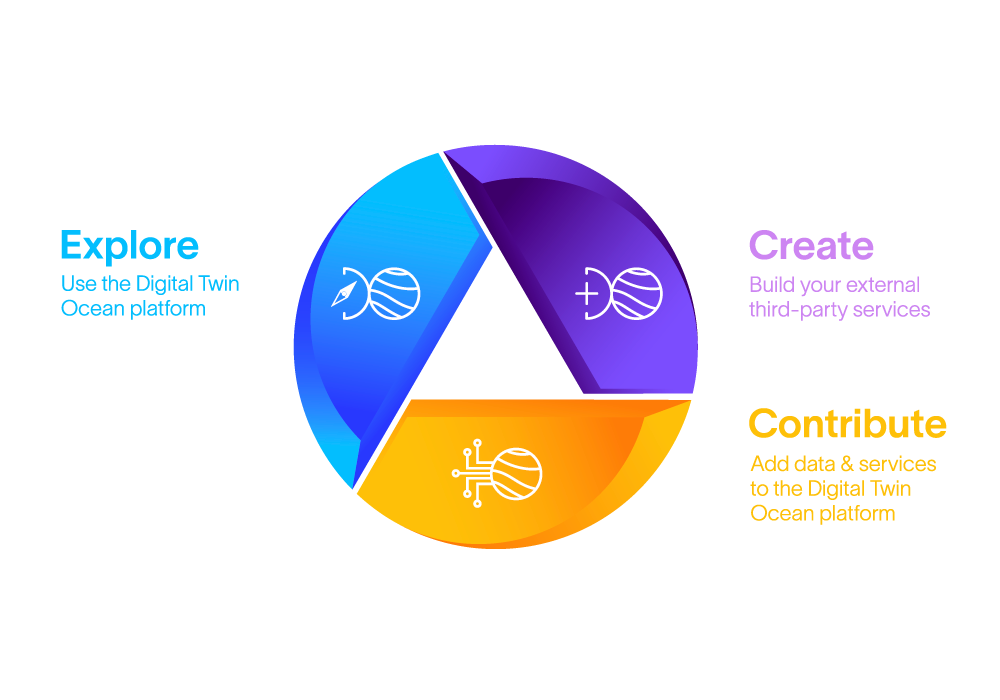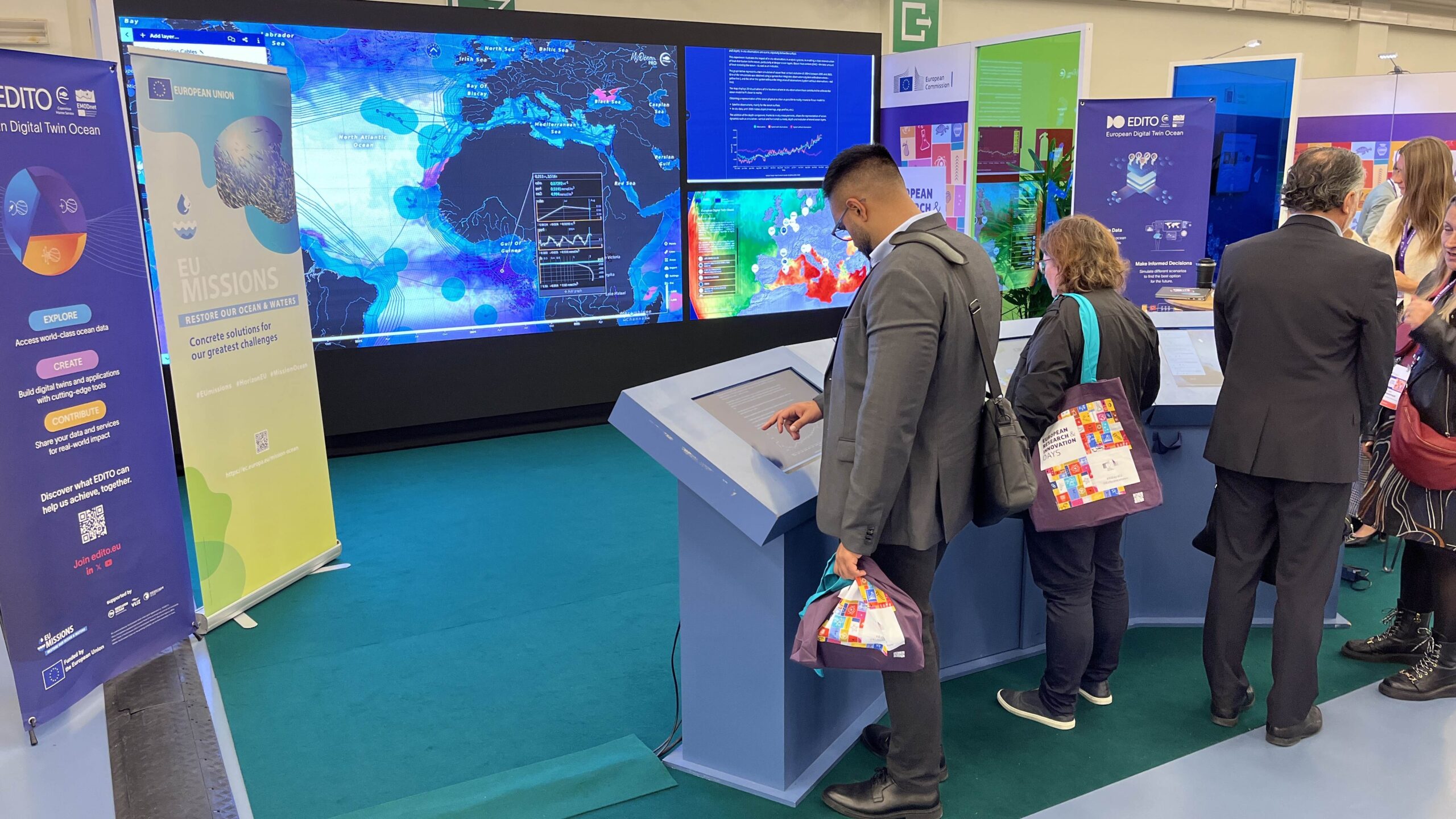The co-creation of the European Digital Twin Ocean continues with the next phase of the EDITO project

What if we could understand the ocean like never before, and predict the impact of our actions?

At the 2022 World Ocean Summit, the European Commission communicated its ambition to develop the European Digital Twin Ocean. In 2025, the capabilities of EDITO – the public, underpinning infrastructure of the European Digital Twin Ocean – were showcased at the United Nations Ocean Conference in Nice, France. Deemed “an incredible tool” by President Ursula von der Leyen, EDITO is on track to support the development of a groundbreaking, virtual replica of the ocean. By integrating data from multiple sources, it will make an unprecedented depth of information about marine worlds readily available to the public.
The European Digital Twin Ocean will not only make ocean knowledge more accessible to all — it will empower society to act on this knowledge. Decisionmakers, scientists, entrepreneurs, activists and wider society stand to benefit from its tools and applications. For example, tools are currently being developed and demonstrated for simulating “what-if” scenarios to replicate ever-changing marine ecosystems and how human actions impact them. Whether a user wants to explore how pollution affects marine life, compare options for coastal protection during extreme events, or find the lowest emission route for ships, the European Digital Twin Ocean will offer a deeper understanding of the ocean and facilitate science-based decision–making for all.
Milestones achieved so far
From October 2022 to February 2025, development of EDITO began with two sister projects funded by the European Union: EDITO-Infra, and EDITO-Model Lab. EDITO-Infra designed a prototype infrastructure capable of integrating ocean data, models, and Artificial Intelligence, while EDITO Model Lab designed the next generation of ocean numerical models.
Several milestones were achieved in this first phase. One was the set-up of a high speed, cloud-based central storage for data products of Europe’s two major marine data services — Copernicus Marine Service and EMODnet: — the EDITO “Data Lake.” This enables seamless access to data products from these services through a single cloud-computing platform.
EDITO Phase One also initiated the process of building services, digital twin applications and other tools with a wider community of European and international projects, ensuring alignment and shared ownership of an emerging digital ecosystem. These efforts positioned EDITO as Europe’s flagship contribution to the UN Ocean Decade Digital Twins of the Ocean programme.
EDITO enters an ambitious new phase

The EDITO project now continues building the European Digital Twin Ocean platform and community in its second phase, which will run from 2025-2028. In this period, the EDITO infrastructure will be strengthened, making it more powerful while simplifying its user interfaces. This will ease access to resources, allowing developers to build on the platform more easily and enabling users to interact with it in an intuitive way; for example through the development of a smart viewer offering multiple functionalities. The processes for data onboarding and validation will also be enhanced, expanding the EDITO data lake to include not only physical ocean data but also biogeochemical, socio-economic, and citizen science information.
The EDITO modelling environment will be enriched with new tools to support the easy development of Focus Applications (FAs) and What-if Scenarios (WiS). FAs target intermediate users such as modellers, programmers, data scientists and other researchers, who will use the technology behind EDITO to develop new applications and expand the platform’s capabilities. WiS target end users such as policy makers and implementors, blue economy actors, applied researchers and innovators, activists and the general public, who will use simulation and data visualisation tools for their real-world practical information needs.
Contributions from the scientific community will be fostered through open calls, enabling the creation of applications addressing diverse themes towards further evolving the European Digital Twin Ocean. At the same time, the co-construction process initiated in Phase One will be strengthened, while the establishment of a user support centre will ensure that all users can more effectively exploit the platform’s potential and receive the assistance they need to benefit fully from EDITO’s capabilities.
Looking to the future
EDITO is intended to evolve into a long-term public European infrastructure that extends beyond the lifetime of its current phase. By 2030, EDITO envisions a fully operational European Digital Twin Ocean platform, serving as a global benchmark for digital ocean solutions and democratised access to ocean knowledge.

EDITO: The public infrastructure of the European Digital Twin Ocean

